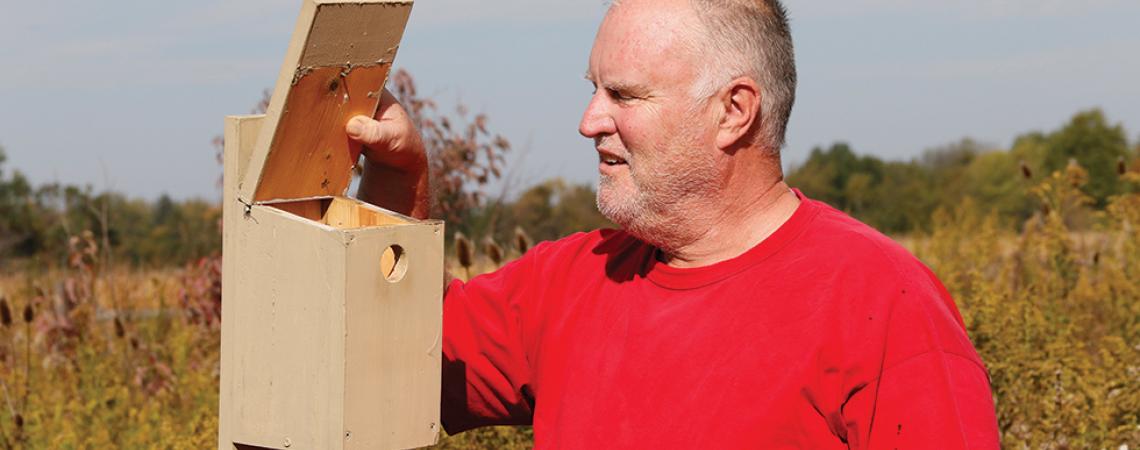Photo by Chip Gross
It’s easy to find Joe Bodis’s property in Huron County, a few miles southeast of New London, Ohio. Just look for the house surrounded by “weeds.”
In actuality, those “weeds” are a carefully planned and developed island of wildlife habitat in a sea of corn and soybean fields. “When I first moved in, neighbors used to stop and ask when I was going to mow the weeds,” Bodis says. “Now they ask what things they can do on their property to attract wildlife.”
A retired pharmaceuticals salesman and member of Firelands Electric Cooperative, Bodis moved to his 5 acres in 2002.
“My passion is bluebirds, and it was a dream of mine to create a habitat that would be attractive not only to bluebirds but also to as many wild bird species as possible,” Bodis says. “I put up 10 bluebird nesting boxes every spring, and the bluebirds use one or two of them. The other boxes are used by nesting tree swallows.”
Bodis estimates that over the years his nesting boxes have fledged more than 100 young bluebirds and some 700 tree swallows. Bodis’s property also has attracted many red-winged blackbirds and other songbirds, various hawks and owls, wild turkeys, ring-necked pheasants, and an occasional bald eagle. The larger mammals he’s seen include coyote, red fox, and white-tailed deer. “I’ve actually seen doe deer give birth on my property twice,” he says.
His next project is to add a water feature to his property — a small, L-shaped pond for fish, frogs, turtles, and water birds.
DIY: Getting started
If you own a few acres of land — or even a decent-sized backyard — and would like to create the type of wildlife habitat Joe Bodis has, first have a plan in mind and make a rough sketch of what you’d like your property to eventually look like. The Ohio Department of Natural Resources, Division of Wildlife, is a great place to begin, as the agency has lots of free information about creating wildlife habitat on small parcels of ground.









